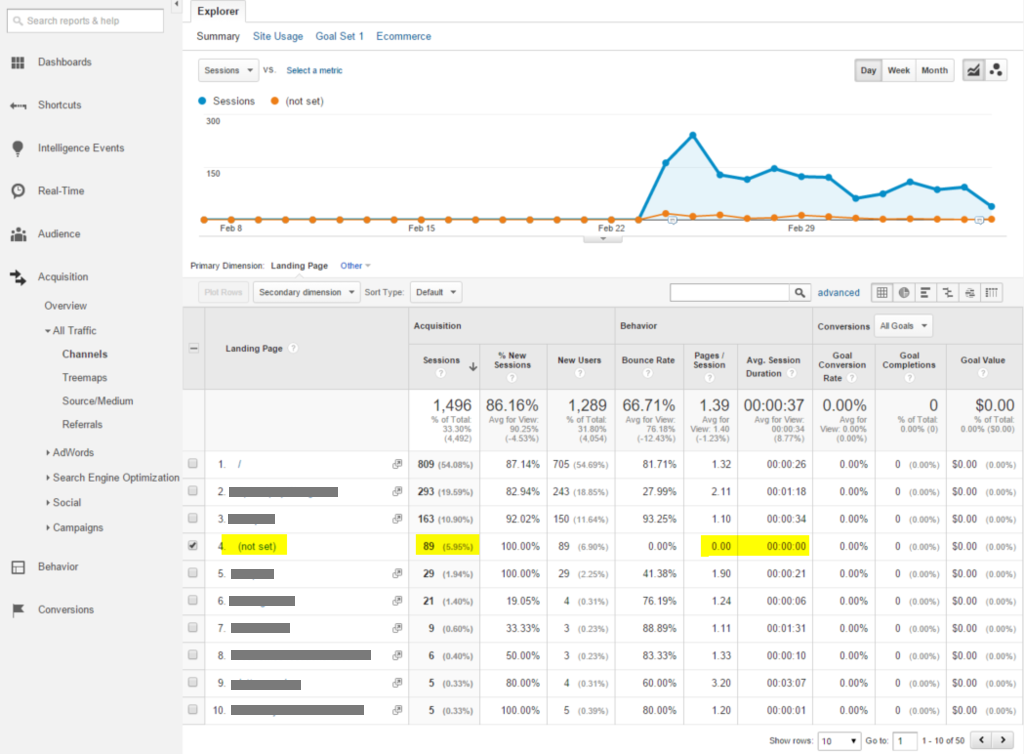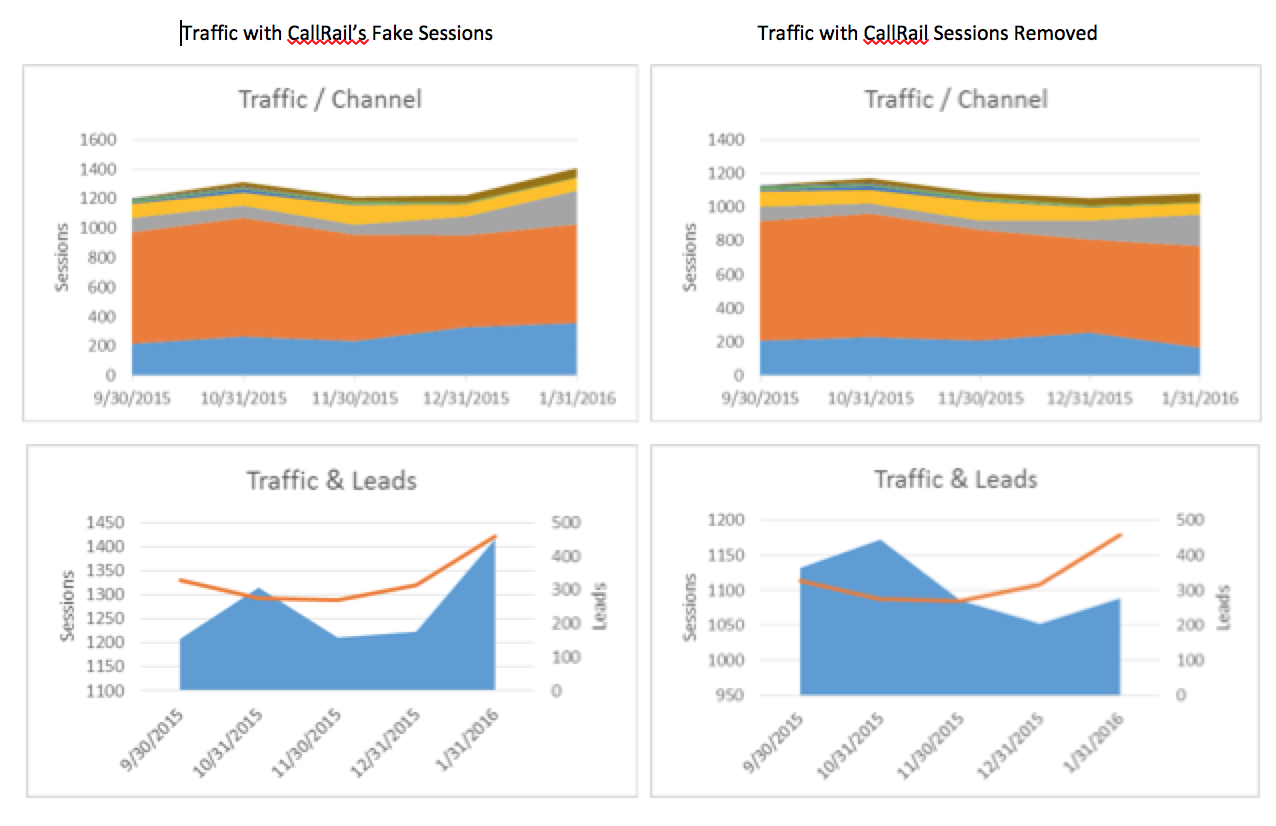Are Your Partners Sending Fake Traffic?
At the risk of stating the mind-numbingly obvious: accurate reporting infrastructure is of primary importance in evaluating the efficacy of marketing channels. We’ve recently uncovered two vendors deep in the conversion cycle, whose reporting infrastructure is double and even triple counting website traffic. (This artificially made our own reporting to the client look much better than it actually was.)
The Issue
The issue at hand is the way conversions are reporting back to Google Analytics data. A good reporting infrastructure is built not only on traffic – but also the frequency of that traffic doing what we want – in the law firm sense, this means (for the most part) filling out an online form or calling the firm. We’ve looked at two different cases in which both online and offline conversions are being counted as a second or even third session, which means over reporting traffic.
Apex Chat (Online Conversions)
In the case of Apex Chat, we found that when sending chat completion data (as a conversion event) back into Google Analytics, Apex actually sends a new session to GA when chat is engaged and another new session if the chat moderator marks the chat as a prospect. These are marked as events in Google Analytics as:
- ApexChat Chat
- ApexChat Lead
This means, a session generating a lead is erroneously reported as three different website visits. If you dig deeper into those sessions – you see (in the graphic below) them applied to Direct traffic and that they see zero pages and zero time on site. You’ll also notice – in this case they inflate direct traffic volume by 6%. Not huge numbers, but not insignificant if you are watching things as closely you should.

This is simply a very sloppy integration with Google’s API – Apex told us they are aware of the issue and have a resolution; although they didn’t roll it out to us when we requested.
CallRail (Offline Conversions)
The CallRail issue is more difficult, because frankly tracking an offline conversion back into an online reporting system is tactically much more difficult. Essentially, the phone number identifies the channel that generated the session; however, tying the call back to the specific session is much more difficult. (The work around is to utilize CallRail’s per session based phone tracking, a significantly more expensive alternative.) But you can see, given the sheer volume of calls generated by a website, that there’s a large inflation of sessions – in this case, they are accurately allocated to the appropriate marketing channel – so traffic for all channels gets artificially inflated. In our example, this was a sitewide artificial increase of 9%. In the graphic below, look at the dramatic difference in patterns between the inaccurate (first column of graphs) and accurate (with the duplicated traffic removed) second column of graphs.

For now, I’ll reject my internal cynic and reject the hypothesis that some especially crappy agencies are deliberately implementing tools to artificially boost their numbers….. or, hmmmm, maybe I’ve just enabled them with the information to do so.
